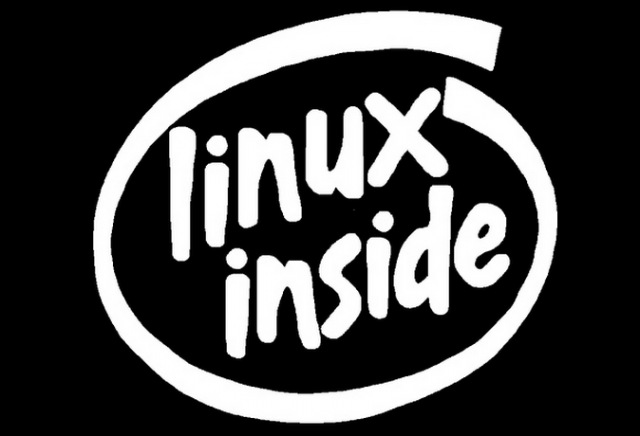
LAS VEGAS—The Facebook-led Open Compute Project has spent the past year building an “open” switch that can boot nearly any type of networking software, giving customers more alternatives to proprietary switch vendors like Cisco.
Intel, Broadcom, Mellanox, and Cumulus Networks jumped on board last November, contributing specifications and software that will bring the project closer to a finished design. They weren’t alone, though: Software-defined networking vendor Big Switch Networks, in January, donated what it calls Open Network Linux (ONL) to the project.
In an interview with Ars at this week’s Interop conference in Las Vegas, newly appointed Big Switch CEO Douglas Murray explained the company’s reasons for getting involved. As Big Switch noted in its announcement, ONL is “the Linux distribution for bare metal switches that runs underneath our commercial Switch Light OS. ONL’s goal is to give people deploying OCP [Open Compute Project] switches a simplified experience with a standard Linux distribution that comes prepackaged with all of the relevant drivers, loaders, and platform-independent goodness. If ONL is successful and becomes a popular distribution for open network hardware, it will also mean less integration work for hardware and software vendors and thus fewer bugs and other surprises once ONL-based products get to end customers.”
A lot of "rudimentary work" goes into setting up switch software, Murray noted. Each time Big Switch gets its own Switch Light OS ready for new hardware (typically based on Broadcom chips), “there’s a bunch of stuff we have to do. It’s like rinse and repeat, rinse and repeat, but it takes time. So we actually took that element, packaged it into something called Open Network Linux, and donated it to OCP. We think it will get people to be able to move to bare metal faster because it streamlines the time it takes to do bring-up of a bare metal switch, and it also allows people to expand their hardware compatibility list more rapidly.”
Companies could create their own switch software to run on top of ONL, he said. “If you’re another vendor, even an incumbent, you could use that to accelerate how quickly you can get a product to market,” he said.
ONL received patches and contributions from other vendors, including Cumulus Networks, one of Big Switch’s rivals.
“We’ve seen great support not only from OCP but from Broadcom, from… ODM [original design manufacturing] vendors like Accton and Quanta, they’re now on board with this. They’re helping and participating in the donation now on top of what Big Switch put in,” he said. “We think it will help get more broad adoption of bare metal overall.”
The Open Compute Project's blog said last week that its planned top-of-rack switch is closer to reality in part because of contributions of Cumulus and Big Switch. There's still work to do, though: "The contributions from Cumulus and Big Switch provide a software foundation, but in order for the OCP switch to actually forward packets, we still need forwarding software on top of the hardware switch itself," the project noted.
There's already one available switch from Interface Masters based on Broadcom's proposed Open Compute specification, and ONL will be available for that switch. Any bare metal switch that supports the Open Network Install Environment contributed by Cumulus will run ONL.
The Open Compute Project was dealt a blow recently when its visionary, Facebook’s Frank Frankovsky, left to build an optical storage startup. Open Compute will live on under people such as Najam Ahmad, who runs Facebook's network engineering team and leads the Open Compute Project's network program. The project still has support from a variety of vendors, too. At Interop this week, Emulex announced converged network adapters for Open Compute hardware.
Switching gears
Still, Big Switch hasn’t reached the heights of success it expected when it was founded in 2010. The company shifted strategy in response, Network World’s Jim Duffy wrote last September. Big Switch “killed the first release of its Big Virtual Switch application and is now focusing on SDNs [software-defined networks] that merge the physical and virtual worlds,” Duffy wrote. “Big Switch is also now offering its products in bundles that run on commodity bare metal switches rather than piecemeal controller and monitoring and network virtualization applications that run on switches from ecosystem partners.”
Big Switch “also left the OpenDaylight open source SDN consortium and saw six of its partners—Juniper, Arista, and Brocade among them—jump ship as the company undertook this transformation over the past year.” Big Switch co-founder Kyle Forster said his company's “new focus on bare metal hardware was ‘at odds’ with its now former switch partners.”
Big Switch, which has raised $45 million from investors, sells the aforementioned Switch Light OS and software that controls the switches from a central management point. Its products implement the OpenFlow networking protocol and have plugins to connect to the OpenStack infrastructure-as-a-service software.
Big Switch’s customers number in the “double digits,” with paid deployments from $25,000 to one customer that uses Big Switch software, in 13 data centers, at a cost of about $100,000 for each data center, Murray said.
Customers have plenty of options. Cisco just revealed the OpFlex protocol, an alternative to OpenFlow, and Dell teamed with Cumulus Networks to sell switches with Cumulus’ Linux network operating system.
Despite Dell’s partnership with Cumulus, Murray is impressed with the company’s work. “The only incumbent vendor moving away from proprietary hardware is Dell,” he said.
Bare-metal hardware is important, as it lets users change vendors without abandoning hardware, simply by removing software and replacing it with an alternative, Murray said.
“Companies like Google, Facebook, and Amazon, what they’re doing is taking bare metal switches, writing their own software onto those switches, and as they write that software, they are customizing it to their applications,” he said. “In large part what we’re trying to do is take what Facebook is doing and what Google is doing and bring that to every other data center.”
reader comments
30